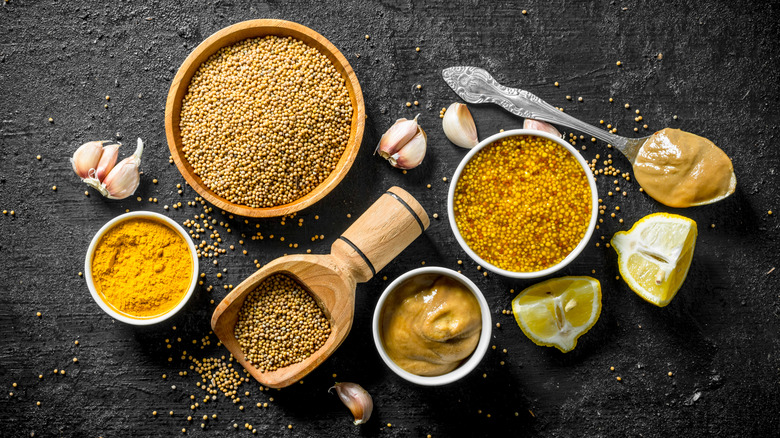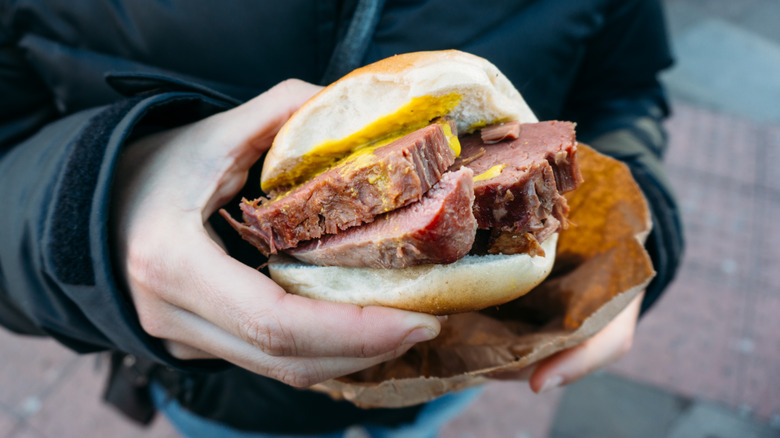Spicy Brown Mustard Vs. Yellow Mustard: What's The Difference?
When it comes to mustard, are you team yellow or are you more of the spicy brown variety?
According to The Spruce Eats, there are 40 different species of mustard plants but only three — black, brown, and white — produce the seeds that make the condiment. It's these seeds (which are not pungent until cracked open) and the liquid added to them that determines the heat level of the sandwich spread. Using vinegar mellows the flavor, while adding water to the seeds allows them to keep their kick (via Serious Eats).
Yellow mustard comes from the white mustard seed, according to Serious Eats. Turmeric gives the golden condiment its distinctive hue. A more mild mustard, the addition of acidic vinegar slows the reaction of the heat-producing enzymes in the seeds, which gives yellow mustard's punch a less shocking kick at the start but offers a longer finish. This mellow-flavored mustard is often found slathered on hot dogs. TheHotDog.org states that everyone's favorite condiment, ketchup, kills the beefy flavor of the frank. The website also reports that mustard was featured on the Coney dog; the 1900 precursor to today's hot dog, along with ground beef or chili and onions.
Yellow mustard vs spicy brown
Spicy brown mustard, by contrast, brings a higher heat level (via Serious Eats). The brown seeds are more pungent than their yellow cousins and are soaked in less vinegar, according to Clockwork Lemon. This is what gives it a kick straight out of the gate. Added spices like ginger and cinnamon can contribute to the nose-watering heat (via Clockwork Lemon). Further, the bran is left on the mustard seeds, giving the condiment a coarser texture, Serious Eats explains. The robust flavor of spicy brown mustard can stand up to flavor-bomb sliced meats like pastrami and ham, making it the perfect pairing with deli sandwiches.
According to Clockwork Lemon, mustard's nose-burning quality is caused by an oily compound called allyl isothiocyanate (which is also present in horse radish). Just Enough Heat explains that because allyl isothiocyanate vaporizes, the compound is more pronounced in the nose than on the tongue. The vapor form also means that the burn subsides quickly. The Nibble explains that isothiocyanates offer more than mustard's spicy kick. The compound's health benefits include preventing cancer cell growth in stomach and colon cancer.
While mustard came in dead last in our recent favorite condiment poll, there are plenty of other delicious (and surprising) culinary uses for the maligned flavoring, from lemonade to fried chicken.

